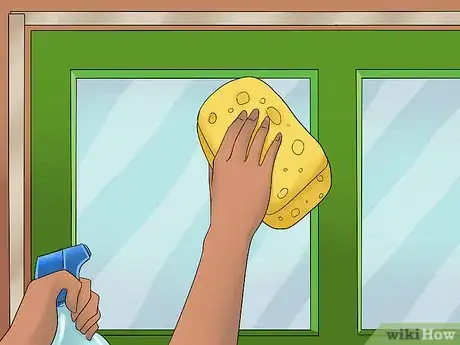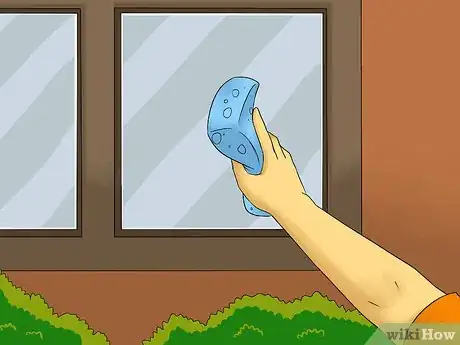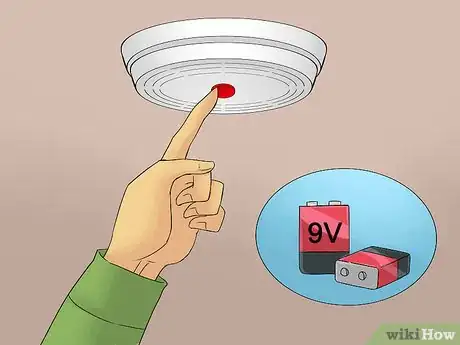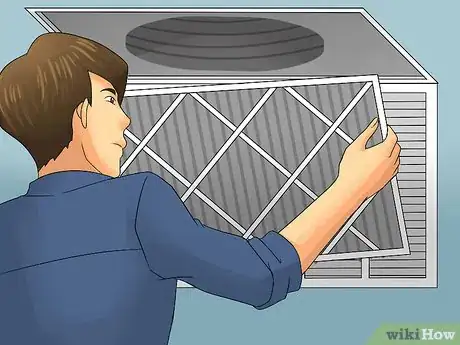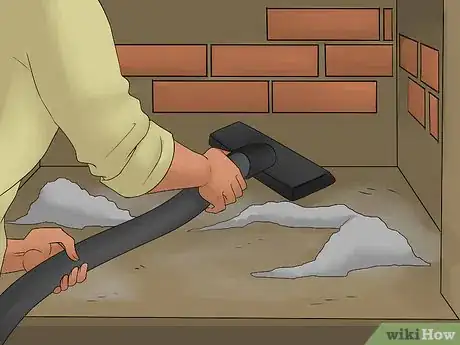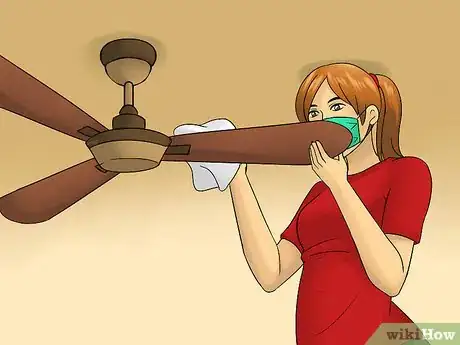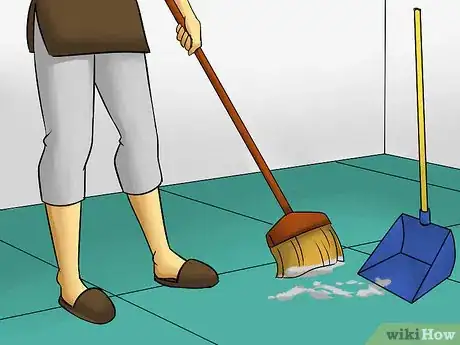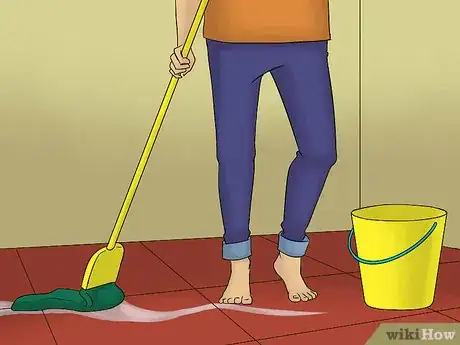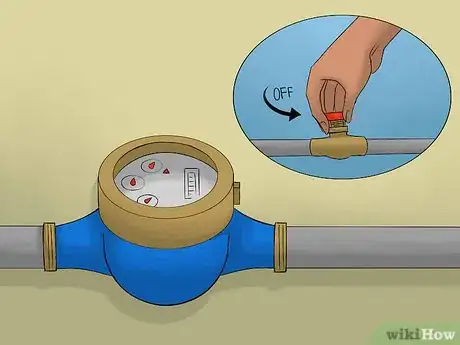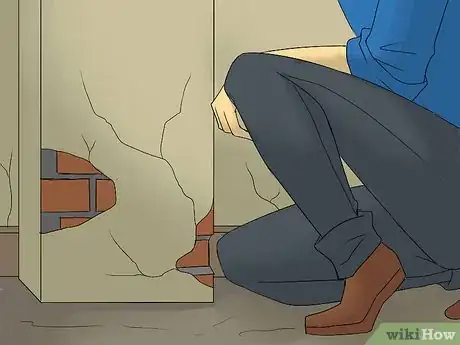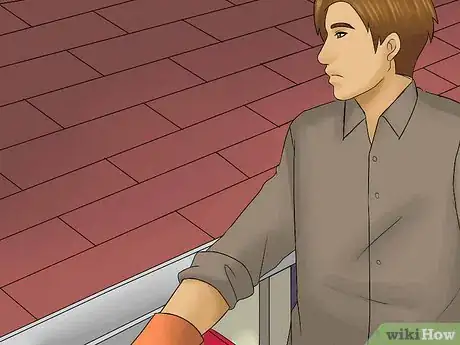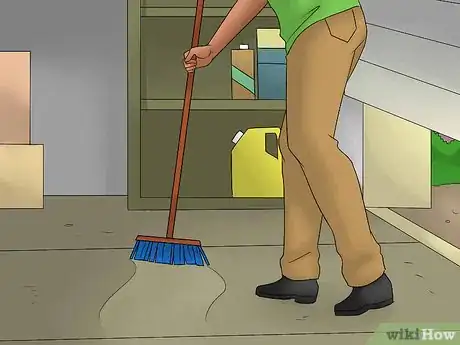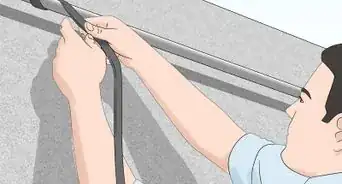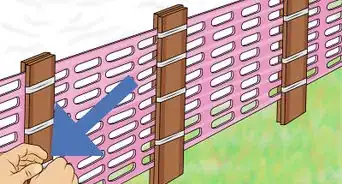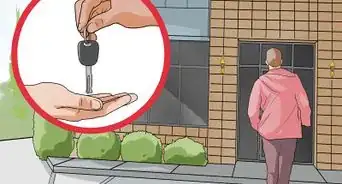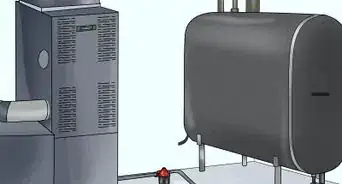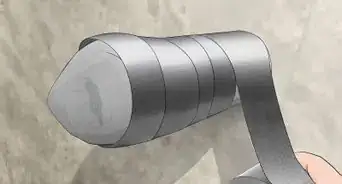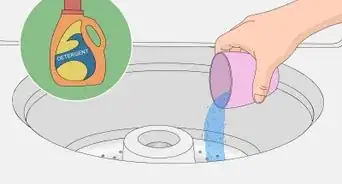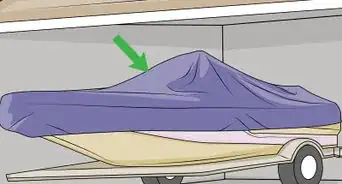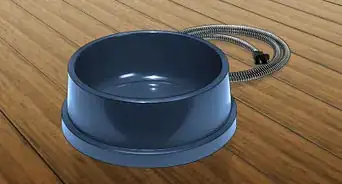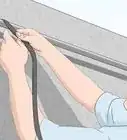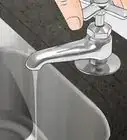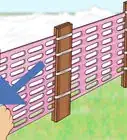This article was co-authored by Jacob Pischer. Jacob Pischer is a Home Improvement Specialist and the Owner of Helpful Badger, a home repair service in Portland, OR. With over four years of experience, Jacob specializes in a variety of handyman services including pressure washing, cleaning gutters, repairing drywall, fixing leaky plumbing fixtures, and repairing broken doors. Jacob studied at Madison Area Technical College and has a background in real estate investment.
There are 14 references cited in this article, which can be found at the bottom of the page.
This article has been viewed 61,279 times.
In cold-weather climates, a house is usually winterized in order to protect the home from damage that can be caused by extreme winter weather. This is particularly important if the home will be vacant for any extended period of time during the winter. If you are moving into a home that has been winterized, or if you're returning to your home after a prolonged absence during winter weather, you will have to dewinterize the house in order to make it habitable. Learning how to dewinterize your house, inside and out, can help get you settled in for warmer weather.
Steps
Dewinterizing Your Windows
-
1Take insulation off windows. If you've put up insulation film on the windows, you'll need to take it down before you can open the windows. Leaving insulation film up after the winter will make it stuffy and hot inside your home.[1]
- Use a hairdryer to heat up the double-sided tape along the perimeter of the windows. Once the adhesive agent is warm and soft, you should be able to pull the plastic straight off the window frame. Use the hairdryer once again to soften any adhesive that was left on the window frame. Then, use warm water and soap or a spray-on cleaning agent to scrub off any traces of adhesive on the window frame.[2]
- If you installed storm windows, you'll need to remove those, as well.[3]
-
2Clean the inside of windows. Once the insulation is off, you'll need to clean the windows. It's best to clean both the inside and outside of the windows, since it's probably been a while since the windows were cleaned.Advertisement
-
3Clean the outside of windows. The outside of windows can be washed using the same spray-on cleaning agent or cold, soapy water. If you are cleaning the outside of windows on a two- or three-story house, it may be difficult or even unsafe to wipe down the windows. In this case, you may want to wash the windows using a hose, angled upward from the yard.[6]
-
4Check caulking and weather stripping. Once you've cleaned the windows, you may want to check the caulking and weather strips around the windows. Caulk and weather strips can wear down over time, and if you use air conditioning in your home during the summer an air leak can cost you money and energy.[7]
- Choose a caulk that is waterproof to ensure that no moisture gets into your home.
- Clean the edges that are to be caulked. Scrape away old, peeling caulk or paint with a putty knife or flathead screwdriver.[8]
- Hold the caulk gun at a 45 degree angle around the entire window.[9]
- Apply the caulk in a continuous, straight stream to every joint in the window frame and to the joint where the wall and window frame meet.[10]
- Be sure that the caulk is adhering to both sides of the seams.[11]
- Use a putty knife to place any errant caulk into the seam where you want it.[12]
- Allow caulk to completely dry before painting or touching the caulk. Drying times vary depending on the type of caulk used, but most caulks will be completely dry within 24 hours.
Addressing Safety Concerns
-
1Test smoke and CO2 alarms. Smoke and carbon monoxide alarms should be tested every month, but it's especially important if you haven't inhabited the house for an extended period of time.[13]
-
2Change furnace filters. The filter on your furnace traps dust, dander, hair/fur, and other particulates in the air inside your home. Basic fiberglass or paper filters typically need to be changed every one to two months, and electrostatic or HEPA filters need to be cleaned or changed every two to four months.[17] Even though you won't need the furnace during summer, it's a good idea to change old filters. If a cold snap hits in the spring and you turn the furnace back on, you'll want to ensure that the furnace isn't loaded up with dirt, dust, and other particulates.
-
3Clean out the fireplace. If your home has a fireplace, it's a good idea to clean it out as part of your spring cleaning and dewinterization routine. Much like the furnace filter, you want to ensure that the fireplace is clean, in case a cold snap hits in the spring and you need to have a fire.
- Move anything that might be blocking the fireplace, and put down old sheets or a plastic shower curtain to catch any ash and soot.[22]
- Use a wet paper towel to wipe down the grate inside the fireplace.[23]
- Use a shop vacuum to remove as much of the ash, soot, and wood fragments as possible. Do not use a regular household vacuum, as the material you vacuum from the fireplace might clog the filter of the vacuum.[24]
- Scrub the walls and floor of the fireplace with a handled brush and a mixture of warm water and a gentle soap.[25]
- Have a professional chimney cleaner scrub out your chimney to prevent the risk of fire.[26]
Cleaning the Inside of Your Home
-
1Dust any ceiling fans. You can use rubber bands to fasten paper towels or a cleaning wipe to a paint roller, which can then be rolled across the fan blades.[27] If you don't have these materials you can use a broom to dust the blades of a ceiling fan.
-
2Sweep and vacuum the floors. You'll need a broom to sweep wood and tile floors and a vacuum to clean any carpets.
- You can sweep from end to end, or start along one wall and clean the perimeter of the room, working your way inward.[28]
- Use a similar method for carpeted rooms.
-
3Mop the floors. Once you've swept the floors, you may need to mop to clean up any dirt and dust that accumulated over the winter.
- Fill a bucket with warm water and a cleaning agent like Murphy's Oil or Pinesol.
- Dip a mop into the bucket, ring it out thoroughly, and work your way across the floor. Start in the corner farthest from the door you'll use to leave the room, so you don't have to walk across a wet floor.[29]
- Use short strokes and move with the grain of the floor, if the floors are made of wood.[30]
Dewinterizing the Outside of Your Home
-
1Turn your water back on. If your water was turned off for the winter, you'll need to turn the water back on. This should be a fairly simple procedure, unless your home is very old.
- The inside valve may be located under the kitchen sink, in a cupboard, or underneath a removable floorboard.
- The outside valve, also called a stopcock, is usually located with the water meter or near the edge of your property, under a cover.
- Turn the valve counterclockwise to open the valve and return water flow to your home.
- Run water through the pipes to flush out any sediment that might be in them.[31]
-
2Check pipes for leaks. After a harsh winter, it's possible your pipes might have frozen and cracked. Cracked pipes can cause leaks that could damage your home and will lose a lot of water if left untreated..
- Find your home's water meter. It is located outside the house, usually near a gate or fence if you have one.[32]
- Turn off all the taps in your home, except for the stop taps at the toilet and next to the water meter.[33]
- Make sure no one in your home uses any water while you test the pipes.[34]
- Record the numbers on your water meter dial.[35]
- Wait two hours, then record the number on the water meter again. If any of the numbers are different, there may be a leak. Call a qualified plumber to assess any damage and make repairs as necessary.[36]
-
3Inspect the foundation. After a harsh winter, it's important to check your foundation for any cracks or separations. Walk around the perimeter of the house. If there are any cracks, or if the foundation and wall are disjointed, it should be readily apparent. Call a qualified contractor for any damage to the house's foundation.
-
4Clean the gutters. After the fall and winter, many gutters become clogged with leaves and branches. Cleaning out the gutters will help reduce the chances of your home incurring water damage due to clogged gutters and drains.
-
5Check the roof for damage. While you are on a ladder, you may want to examine your roof to look for damage. Roofs frequently lose shingles during bad weather, and may be susceptible to holes or water damage. Use caution when examining the roof. If there is any risk of damage to the roof, do not walk, sit, or climb onto the roof at all.
- Visually examine the roof, looking for any shingles that are missing or damaged. If possible, check for loose nails.
- Visually scan the roof, looking for any dents or dips, as these could indicate a leak.
- Call a qualified roofer if you believe there is any structural damage to your roof.
-
6Clean the garage and driveway. It's important to thoroughly clean out your garage floor and your driveway to ensure that any sidewalk salt is properly rinsed away. Sidewalk salt can cause cracks and etches in the concrete, and the problem gets worse the longer salt sits on the concrete.[40]
- Sweep the garage and the length of the driveway with a push broom. Then rinse the garage floor and driveway thoroughly using a hose.
Expert Q&A
Did you know you can get expert answers for this article?
Unlock expert answers by supporting wikiHow
-
QuestionHow do I get my home ready for spring?
 Jacob PischerJacob Pischer is a Home Improvement Specialist and the Owner of Helpful Badger, a home repair service in Portland, OR. With over four years of experience, Jacob specializes in a variety of handyman services including pressure washing, cleaning gutters, repairing drywall, fixing leaky plumbing fixtures, and repairing broken doors. Jacob studied at Madison Area Technical College and has a background in real estate investment.
Jacob PischerJacob Pischer is a Home Improvement Specialist and the Owner of Helpful Badger, a home repair service in Portland, OR. With over four years of experience, Jacob specializes in a variety of handyman services including pressure washing, cleaning gutters, repairing drywall, fixing leaky plumbing fixtures, and repairing broken doors. Jacob studied at Madison Area Technical College and has a background in real estate investment.
Home Improvement Specialist
References
- ↑ http://www.ny1.com/nys/buffalo/your-home/2015/03/21/start-prepping-for-spring-by-dewinterizing-your-home.html
- ↑ http://www.frostking.com/removing-the-window-kits-in-the-spring/
- ↑ Jacob Pischer. Home Improvement Specialist. Expert Interview. 4 September 2020.
- ↑ http://www.bobvila.com/articles/how-to-clean-windows/#.VftofZ1Viko
- ↑ http://www.bobvila.com/articles/how-to-clean-windows/#.VftofZ1Viko
- ↑ http://www.bobvila.com/articles/how-to-clean-windows/#.VftofZ1Viko
- ↑ http://energy.gov/energysaver/projects/savings-project-how-seal-air-leaks-caulk
- ↑ http://energy.gov/energysaver/articles/caulking
- ↑ http://energy.gov/energysaver/articles/caulking
- ↑ http://energy.gov/energysaver/articles/caulking
- ↑ http://energy.gov/energysaver/articles/caulking
- ↑ http://energy.gov/energysaver/articles/caulking
- ↑ http://www.dfes.wa.gov.au/safetyinformation/fire/fireinthehome/pages/smokealarms.aspx
- ↑ http://www.dfes.wa.gov.au/safetyinformation/fire/fireinthehome/pages/smokealarms.aspx
- ↑ http://www.dfes.wa.gov.au/safetyinformation/fire/fireinthehome/pages/smokealarms.aspx
- ↑ http://www.dfes.wa.gov.au/safetyinformation/fire/fireinthehome/pages/smokealarms.aspx
- ↑ http://www.bobvila.com/articles/change-a-furnace-filter/#.Vftzlp1Viko
- ↑ http://www.bobvila.com/articles/change-a-furnace-filter/#.Vftzlp1Viko
- ↑ http://www.bobvila.com/articles/change-a-furnace-filter/#.Vftzlp1Viko
- ↑ http://www.bobvila.com/articles/change-a-furnace-filter/#.Vftzlp1Viko
- ↑ http://www.bobvila.com/articles/change-a-furnace-filter/#.Vftzlp1Viko
- ↑ http://www.goodhousekeeping.com/home/cleaning/tips/a12781/cleaning-the-fireplace/
- ↑ http://www.goodhousekeeping.com/home/cleaning/tips/a12781/cleaning-the-fireplace/
- ↑ http://www.goodhousekeeping.com/home/cleaning/tips/a12781/cleaning-the-fireplace/
- ↑ http://www.goodhousekeeping.com/home/cleaning/tips/a12781/cleaning-the-fireplace/
- ↑ http://www.goodhousekeeping.com/home/cleaning/tips/a12781/cleaning-the-fireplace/
- ↑ http://www.huffingtonpost.com/2013/02/04/easiest-way-dust-ceiling-fan_n_2608779.html
- ↑ http://www.home-ec101.com/cleaning-101-got-me-the-dustpan-blues/
- ↑ http://www.home-ec101.com/mopping-is-no-cause-for-moping/
- ↑ http://www.home-ec101.com/mopping-is-no-cause-for-moping/
- ↑ Jacob Pischer. Home Improvement Specialist. Expert Interview. 4 September 2020.
- ↑ http://southeastwater.com.au/Residential/HowTo/Pages/CheckForLeaks.aspx
- ↑ http://southeastwater.com.au/Residential/HowTo/Pages/CheckForLeaks.aspx
- ↑ http://southeastwater.com.au/Residential/HowTo/Pages/CheckForLeaks.aspx
- ↑ http://southeastwater.com.au/Residential/HowTo/Pages/CheckForLeaks.aspx
- ↑ http://southeastwater.com.au/Residential/HowTo/Pages/CheckForLeaks.aspx
- ↑ http://www.bobvila.com/articles/19-quick-tip-cleaning-your-gutters/#.Vft3wZ1Viko
- ↑ http://www.bobvila.com/articles/19-quick-tip-cleaning-your-gutters/#.Vft3wZ1Viko
- ↑ http://www.bobvila.com/articles/19-quick-tip-cleaning-your-gutters/#.Vft3wZ1Viko
- ↑ http://www.ny1.com/nys/buffalo/your-home/2015/03/21/start-prepping-for-spring-by-dewinterizing-your-home.html


